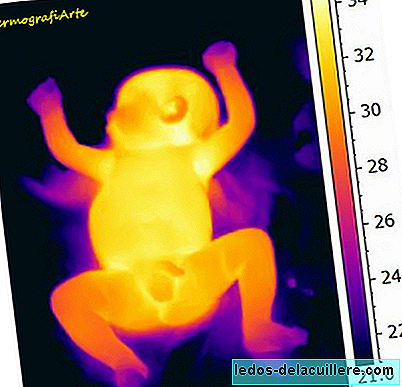
One of the immediate risks after having given birth is postpartum vaginal bleeding. It is a complication that happens especially during the first two hours after delivery, and although it is not frequent it can become serious, even in one of every four cases I could assume the death of the mother.
Hemorrhages should not be confused with postpartum lochia: during the period of uterine regression the discharge of vaginal secretions from inside the uterine cavity is normal. Although the loss of blood during the expulsion period and the first hours of postpartum is normal (spontaneous vaginal delivery involves the loss of an average of 500 ml of blood, and a caesarean section approximately 930 ml.), A small percentage of women (7-8%) will exceed the average loss.
When vaginal bleeding is severe, it is when dangerous complications can occur due to circulatory insufficiency and insufficient irrigation, causing hypovolemia or a decrease in the circulating volume of blood.
Causes of postpartum hemorrhage
Uterine inertia Postpartum hemorrhages are more frequent in older, multiparous, multiple pregnancies, polyhydramnios women, after a very long delivery, with previous or very attached placentas. They also predispose certain drugs (prolonged use of oxytocin, halothane, magnesium sulfate and tocolytic drugs), chorioamnionitis, a history of postpartum hemorrhage in previous pregnancies, fetal death, concomitant uterine fibroids and amniotic fluid embolism or coagulation disorders (congenital or acquired). Almost all previous factors cause atony or uterine inertia, that is, lack of contraction of the uterus, so that the placental bed is bloody with continuous bleeding.
Lesions of the vaginal canal, in relation to traumatic or instrumental deliveries, which should be reduced as much as possible.
Uterine rupture, in patients with a history of uterine scar, prolonged or precipitated delivery, uterine hyperdistance, hyperstimulation with oxytocin.
Uterine inversion, when there has been undue traction of the umbilical cord or excessive fundic pressure, placenta accreta or antecedent of uterine inversion in previous deliveries. It consists of the inversion or invagination of the uterus into its own cavity, descending through the vagina until it appears through the vulva.
Placenta acreta (consists of the superficial union of the placenta to the myometrium), in multiparous patients, with uterine diseases such as myomas or adenomyosis, anterior caesarean section, placenta previa, previous uterine legrados.
Retained placenta, which occurs in 1 in 100 vaginal deliveries and may correspond to aberrant placental lobes or retained placental fragments in the womb.
Postpartum hemorrhage prevention
What can we do to prevent this postpartum hemorrhage? Most of the above causes are beyond our control, however we can act against uterine inertia, the first cause identified. Fundamentally, we can favor the uterine contractions or contractions that help to seal the blood vessels that are left open with the detachment of the placenta, and thus reduce the risk of severe bleeding.
Early Breast Stimulation. Each time the baby is breastfeeding, a discharge of the hormone oxytocin occurs, which causes the uterus to contract more, so that it helps to seal the arterial mouths that remain open after delivery. When the uterus contracts, the vessels close: this is what is called "Pinard's living ligatures."
Massage the uterus strongly for five minutes below the navel, to which the uterus responds by contracting. Postpartum abdominal massage can be performed effectively by medical professionals, who easily detect the level of the uterus and press to help it get involved. It is also a massage that we can perform after birth by controlling the pressure performed.
Early urination. Emptying the bladder as soon as possible will help to have the pelvic space vacated, so that the uterus can contract better.
Following all these tips, we cause the uterine involution process after childbirth to be correct and early, reducing the risk of vaginal bleeding. Typically, yes postpartum hemorrhage makes its appearance, either early, in the first 24 hours; but it can also be late, up to 6 weeks later.












